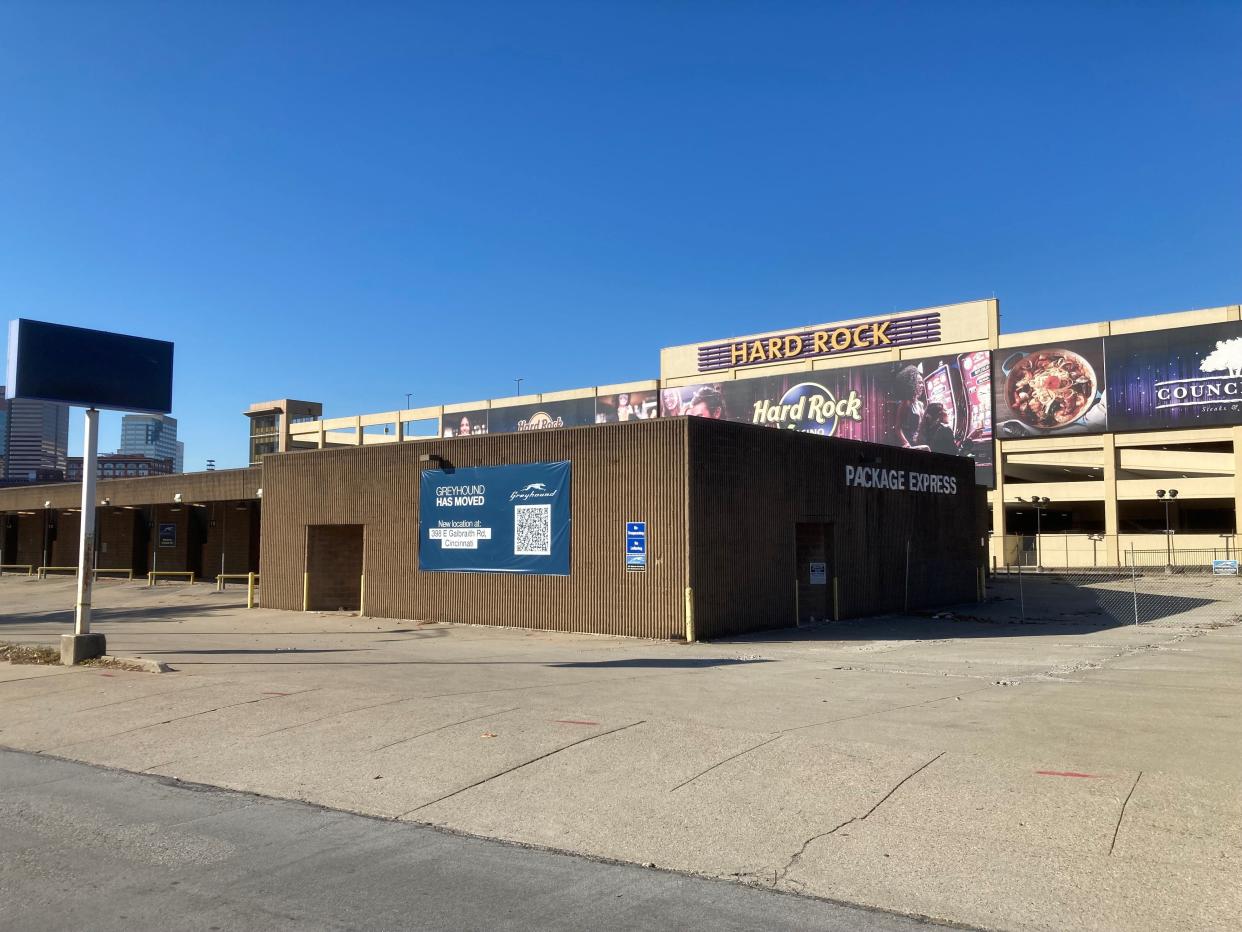At ex-Greyhound station, Cincinnati and developer face off over future of Downtown parking

An old Greyhound bus station on the edge of downtown Cincinnati has become the center of a debate on the future of the city's core.
The owners of the defunct bus station want to turn the site into a parking lot. Those plans have run into efforts by the city to limit how much of Downtown is devoted to parking.
"We have enough parking," said Cincinnati City Councilman Mark Jeffreys. But the owners of the former bus station say they have the legal right to make money off the land and sent a letter to city leaders objecting to delays in hearing their proposal.
On Friday, the Cincinnati City Planning Commission is expected to propose changes to the city zoning code that would restrict surface parking lot development and implement new design standards, such as adding more trees and landscaping, for parking lots in and around Downtown.
Jeffreys first introduced legislation – which has yet to pass ‒ to limit surface parking lots Downtown in September last year. That same month, the planning commission launched a zoning study on parking lots in the newly created Interim Development Control Overlay District No. 88.
Control district regulates parking lot development Downtown
The district, which was established to regulate development while the study is being conducted, covers most of Downtown, including the Greyhound site, and parts of Cincinnati's East End, Mount Adams, Mount Auburn, Pendleton, Over-the-Rhine and West End neighborhoods. (Overlay districts are used to control development in specified areas of the city.)
Initial findings from the ongoing zoning study show there is an oversupply of parking in the district with an estimated 7,500 unused parking spaces. In addition, the approximately 72 acres taken up by surface parking accounts for 13% of the district's land area, the study found.
Jeffreys told The Enquirer surface parking is a poor use of space in the heart of the city and should be restricted to make way for more housing and other developments that enhance the ambience of Downtown.
Parking lots 'suck soul out of our city,' councilman says
"It comes down to a choice of what kind of city we want to be,'' Jeffreys said. "People come to experience a city that is vibrant. They don't come to a city to stroll past surface parking lots.
Surface parking "sucks the soul out of our city,'' he added.
But an attorney representing Chavez Properties, which wants to create 270 new surface parking spaces on the former Greyhound site at 1005 Gilbert Ave., claims the latest push to limit parking lot development shouldn't apply to his client.
Chavez, which owns and operates parking lots throughout the Cincinnati area, bought the 2.4-acre Greyhound site next to the Hard Rock Casino in 2021 for $4.25 million.
At the time, company officials said they planned to turn the site into a parking lot and eventually sell it to a developer after Greyhound vacated the site.
Greyhound move foreshadowed parking lot proposal
Greyhound moved to a new location in November last year off Interstate 75 in Arlington Heights.
On Sept. 1, Chavez applied for a building permit to tear down the Greyhound station and build a parking lot there.
According to Chavez's attorney, a public hearing should have been held no later than Nov. 11 in accordance with the timeline requirements for the commission to approve building permits.
But the parking lot proposal didn't appear on the commission's agenda until Nov. 17, and after more than two hours of debate the commission moved the hearing to Friday on the same agenda as the new zoning proposals.
Hearing delay violates property owner's rights, attorney claims
The delay in hearing the parking lot proposal is "a violation of my client’s right to procedural due process under the Ohio and United States constitutions,'' Chavez's attorney Sean Suder wrote in a Nov. 13 letter to the city solicitor’s office.
Deputy Solicitor Marion Haynes denied the city broke the law in his response to Suder's letter.
"I disagree with your rationale for expediting the Planning Department’s and the Planning Commission’s review of Chavez’s application,'' Haynes wrote. And "I can confirm my opinion that the city’s implementation and administration of Interim Development Control District No. 88 is and has been legally and constitutionally sound.''
Suder declined to comment further, but he accused the city in his letter of establishing the control district to deny his client's rights under the city's existing zoning codes, noting the control district was originally established as a temporary measure.
The planning commission on Sept. 16, 2022 recommended approval of the control district for an emergency three-month period. Cincinnati City Council enacted an ordinance creating the district Sept. 21, 2022.
But the duration of the control district has been extended repeatedly and will remain in place until March 21, 2024 or until the zoning study is complete and implemented, according to the Cincinnati City Planning and Engagement Department.
"The true purpose of the (temporary development district) is simply to prohibit owners such as Chavez from using their property in a manner that is permitted by right,'' Suder wrote in his letter to the city solicitor.
This article originally appeared on Cincinnati Enquirer: What's happening to former Greyhound bus terminal in Cincinnati?

